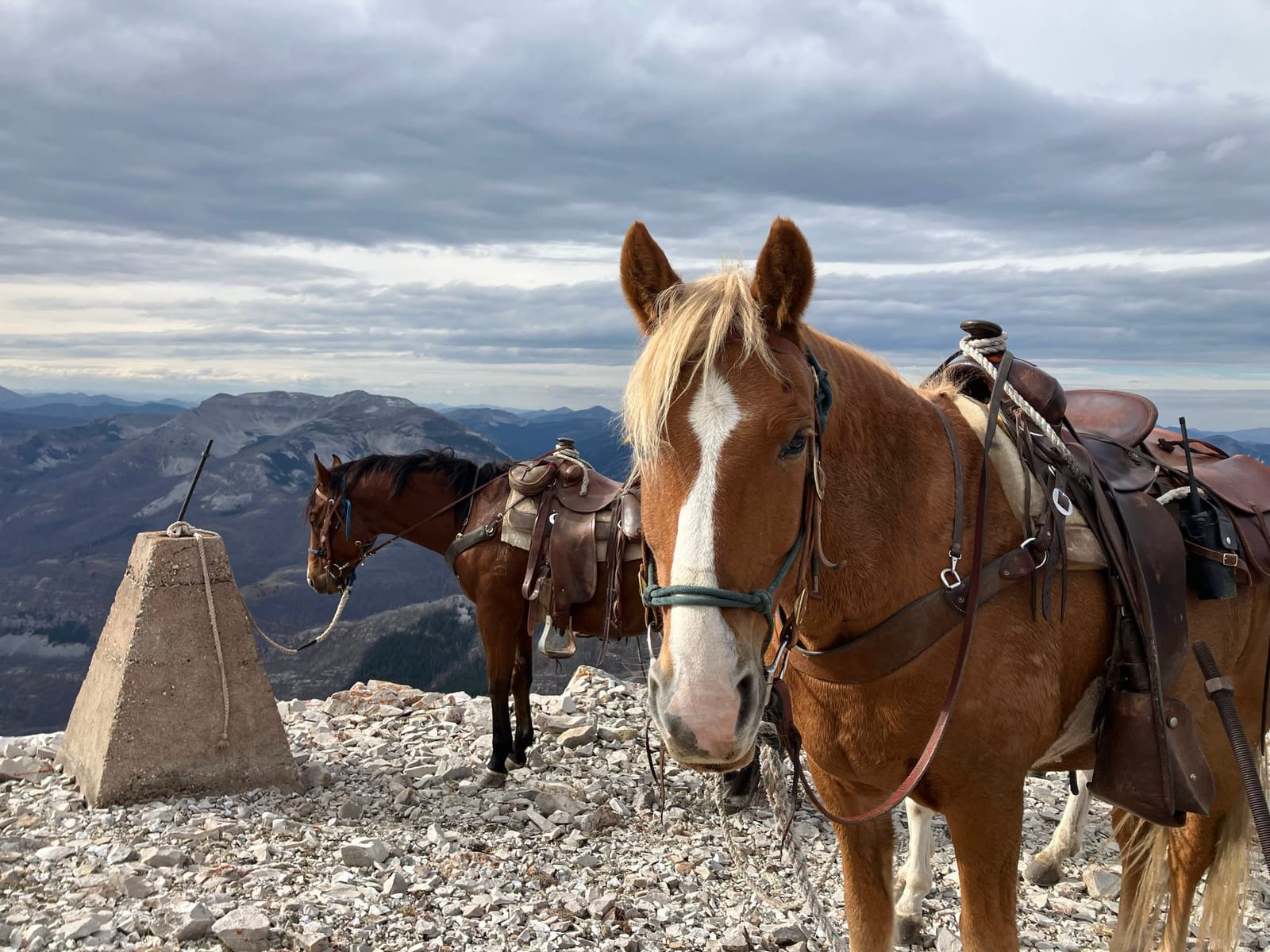by Shi En Kim, High Country News
April 3, 2025
Nick is obsessed with Emmy. Once, in Montana’s Flathead National Forest, when Emmy left without him, Nick ran 15 miles upriver to find her.
Nick hates to be separated from Emmy, but she “doesn’t care if he lives or dies,” said Victoria Winch, a former forestry technician in the Bob Marshall Wilderness Complex. “She has no interest in him whatsoever.”
Nick and Emmy are mules, a brother-sister duo and part of the working livestock in Montana’s Spotted Bear Ranger District. In the secluded reaches of the Flathead, cell service is nonexistent, so Winch and her colleagues spend much of their downtime watching herd hijinks for entertainment.
It’s part of the joys of working for the U.S. Forest Service, especially in the districts that have stock programs. But now, it’s part of the sting of being excised from the agency as part of President Donald Trump’s radical government reform. In February, Winch was among the thousands of probationary Forest Service workers who were fired across the country.
Even though the courts and watchdog organizations have ordered purged staff to be reinstated, many ranger districts have been slow to comply, sources on the ground report. In those that have reinstated their crews, the whiplashed workers are waiting for the next shoe to drop: the legal job-cutting approach known as a reduction in force, which the Trump administration has promised to pursue.
It’s not just the Forest Service’s human employees whose fate is in limbo. The same workers are fretting for their animal colleagues, too. When animals aren’t working, they might be let go, sometimes to an uncertain and not always savory future. But whether the agency’s equines find a refuge or get auctioned off to questionable handlers, the impact of their loss is bigger than the fate of any individual creature. The stock handlers represent the ancient tradition of animal and human working together to move what feels like literal heaven and earth across harsh terrain, forging lifelong bonds in the process.
“You can’t FaceTime a mule. I miss those guys in the winter, and I can’t wait to see them in the summer,” Winch said. Although she has been reinstated and is waiting for her season to start, she’s worried about more cuts on the horizon — perhaps before she can say a proper goodbye. “I don’t know if I’m ever going to see them again. It makes me cry just talking about it.”
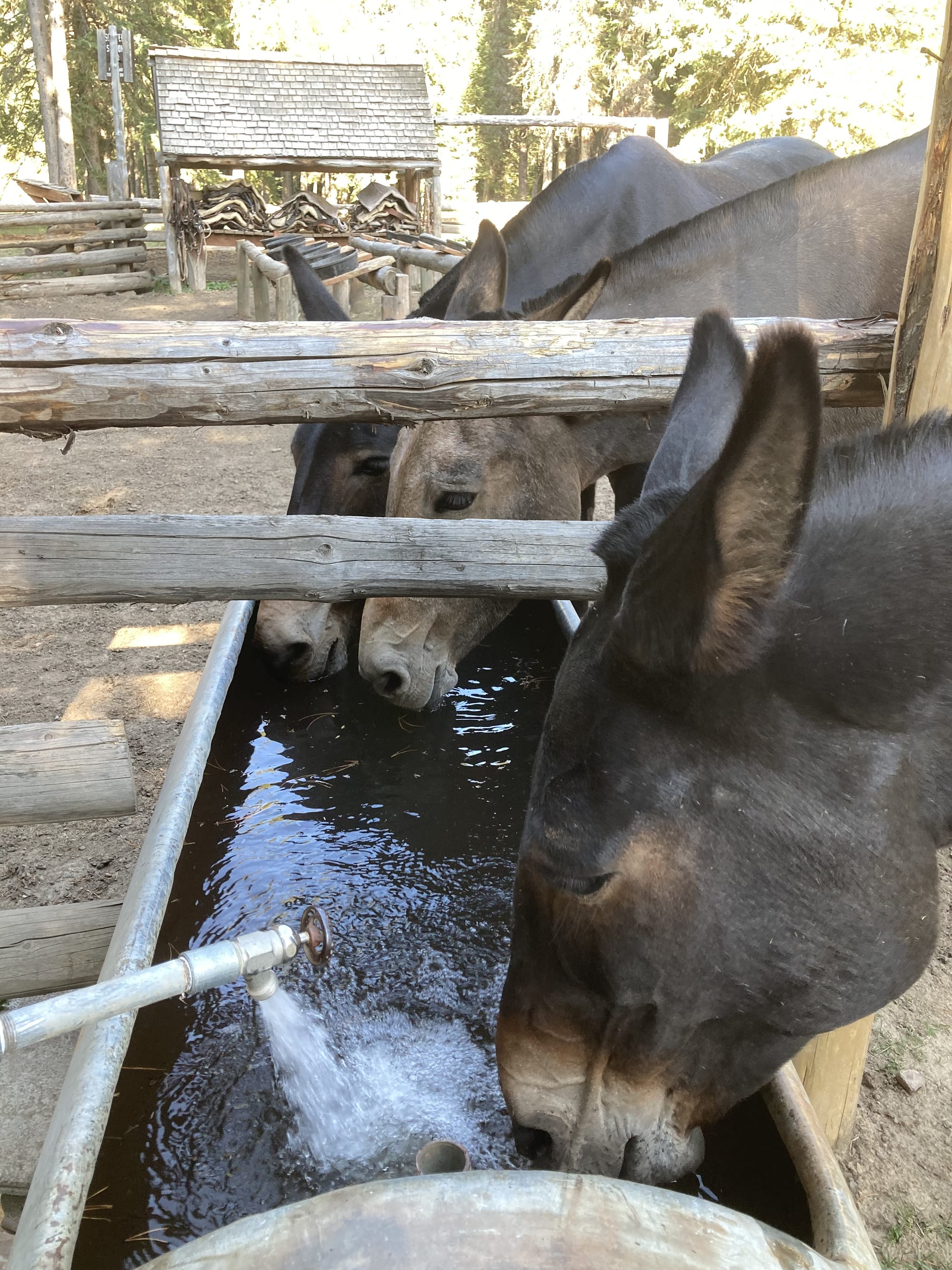
HORSES AND MULES are essential to the Forest Service’s mission, especially when it comes to accessing the remotest corners of the West. The 1964 Wilderness Act forbids the use of mechanized equipment in the backcountry, so horses and mules are the next best option to ATVs and power tools. And they can hold their own — they’re the fastest and most efficient means of transport, trusty animals that can ferry people and supplies for weeks-long expeditions. They can drive plows to carve trenches in the ground and haul logs and blasted rock for clearing trails. More reliable than helicopters, mules and horses are also vital for wildland fire support.
Mules can traverse 20 miles of terrain in a day while carrying 150-pound loads. Fischer Gangemi, a river ranger at Spotted Bear, has seen mules shouldering lumber, explosives, radio batteries, boats, freezers. Once, he even heard of a mule carrying a piano.
“They can move mountains, literally,” Gangemi said.
The differences between horses and mules make them suited for different tasks. Mules, the offspring of a horse mother and a donkey father, carry the heavy loads, because they’re more sure-footed than horses on rugged terrain. True to their reputation, mules are also more stubborn and cunning to handle, so they require a different psychological approach to coax them into obedience. All stock programs have mules, but only some districts, primarily those in the Northern Rockies, have both mules and horses, the latter of which are only used for riding. Whether you’re a horse person or a mule person — yes, it’s the equine equivalent of the cat-versus-dog debate — workers agree that both beasts of burden are delightful.
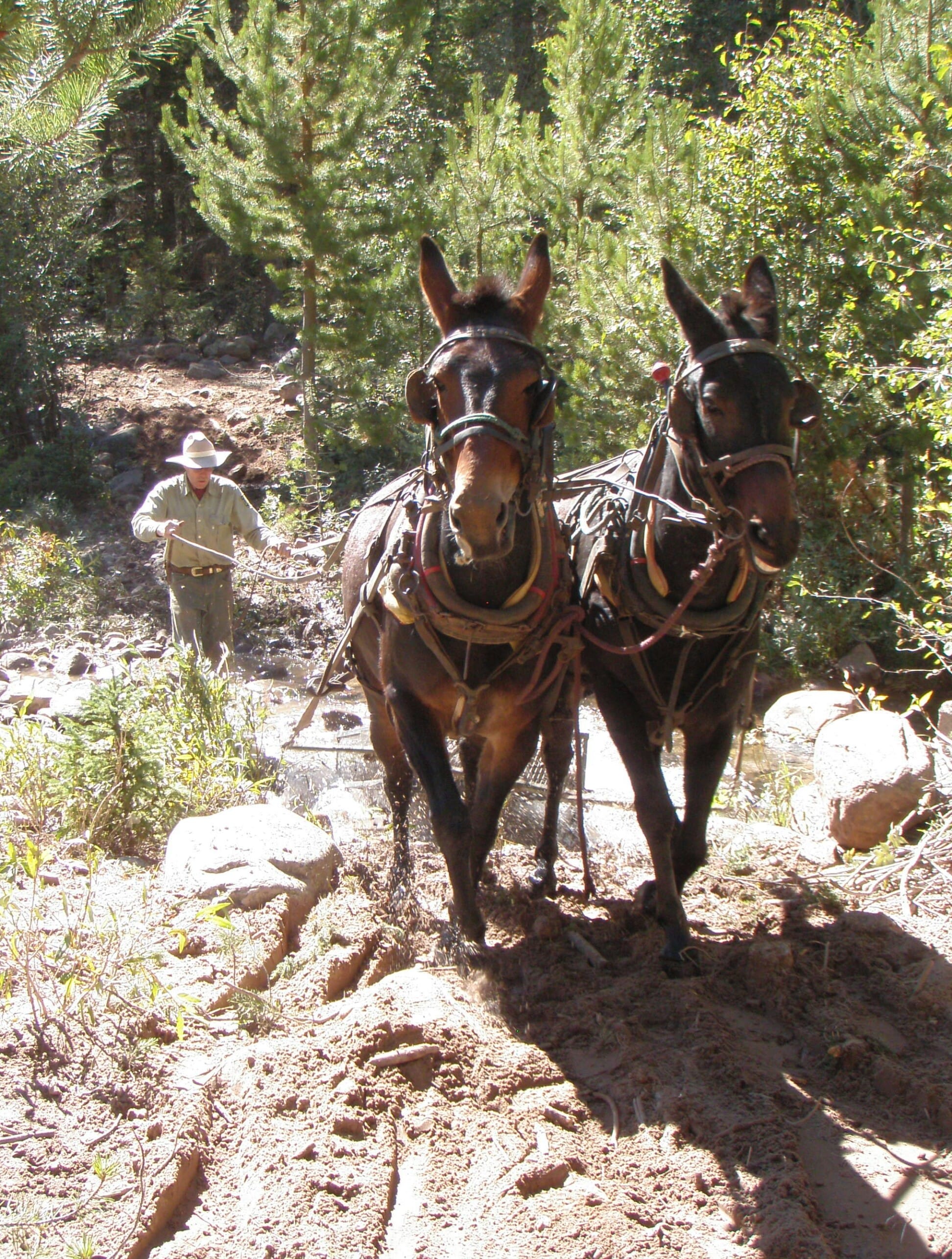
Workers describe their hoofed homies as thousand-pound “puppies” or “teddy bears.” Many mules adore being adored: If you scratch their plate-sized ears, they’ll close their eyes in ecstasy while their lower lips quiver.
The equines have distinct personalities to boot. One ranger favorite is Easter, a horse in the Rocky Mountain Ranger District. Easter loves a good belly scratch. A self-sufficient fellow, he gets his fill by backing into a young pine tree until he’s standing right over it, then shimmies back and forth to get a good tickle. The whole performance is as ungainly as it sounds.
Working with stock animals is diverting, but it’s also backbreaking. The handlers spend several hours every day on top of their regular 8-to-10-hour schedule feeding and watering their animals, plus erecting portable fences to corral them for the night. Packers often work alone in the wilderness, so if the animals encounter trouble, it’s up to the human to solve it.
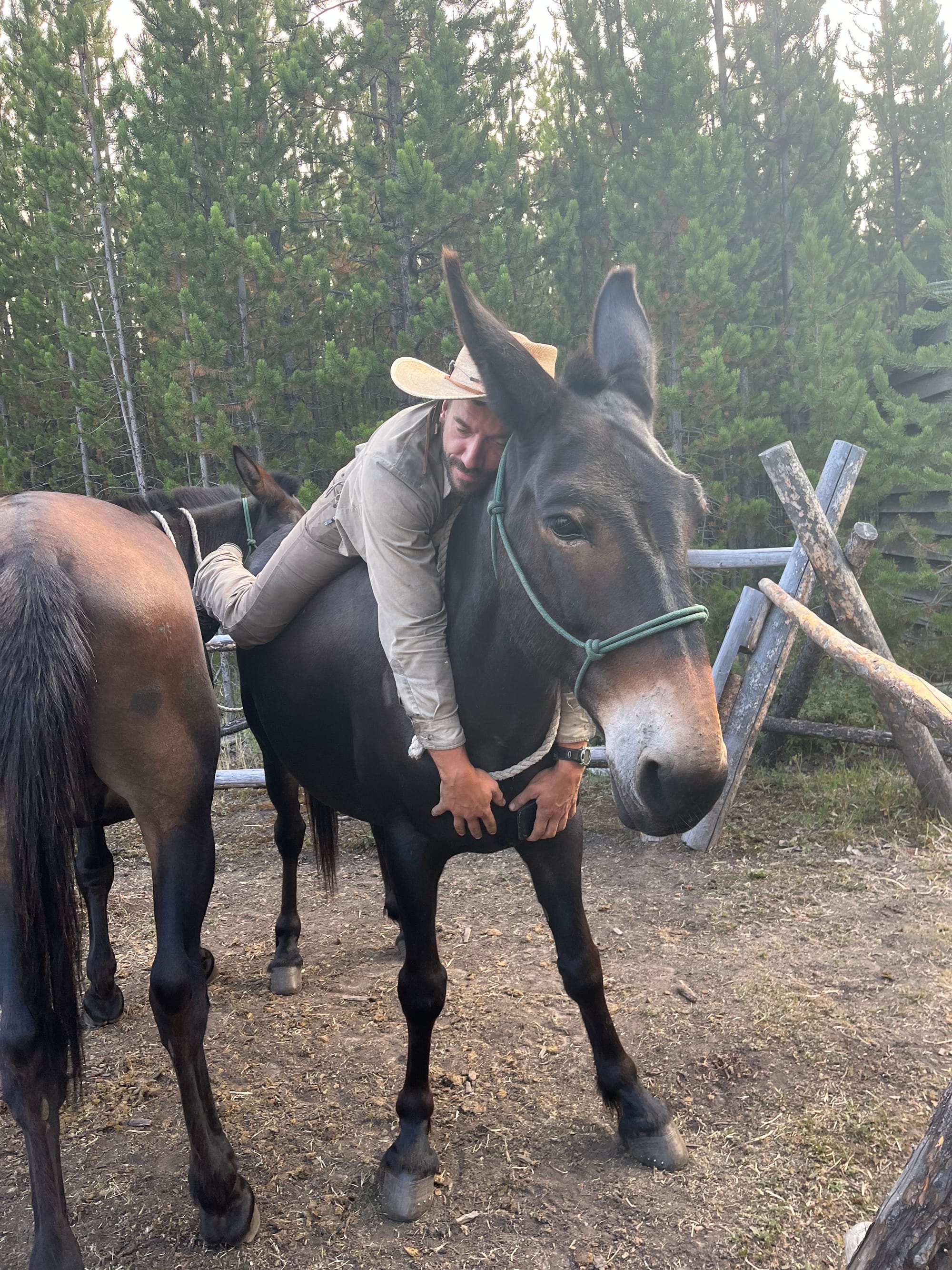
Despite the hardships, forest workers say the animal-human bond that arises is its own reward. In 2016, Gangemi saved his mule Big Time from colic, a potentially fatal condition where the animal’s intestines twist themselves up. Far from any veterinarian, all Gangemi could do was to force Big Time to keep moving for hours so his insides would unknot on their own, against Big Time’s natural instinct to lie down in agony and defeat.
“I was beating this animal that I loved,” said Gangemi. “It was traumatic, violent,” even for him. But the mule seemed to understand what his caretaker was doing.
Big Time remained grateful to Gangemi until his dying day. Whenever ranger and mule worked together in the forest again, Big Time would split away from his herd and seek out Gangemi by the campfire, nestling his head on top of his human savior’s the whole time. “It would be easy for even an intelligent animal to think that I wasn’t saving his life, but he was able to figure it out,” Gangemi said. “He never forgot about that.”
THE USE OF herd animals to carry loads, called packing, arrived at the Forest Service in the late 19th century. The agency had started carving trails, an endeavor that culminated in a golden age of construction after the passage of the 1968 National Trails System Act. Packing was central to the whole enterprise, and equines in the hundreds helped etch out new trails mileage in the thousands in the American outback.
Today, though, packing is a dying art. In the early 1900s, bringing your own horses was part of a forest ranger’s job requirement. Almost every Forest Service district had a stock program back then; now, only a handful do. In California, Forest Service stock plunged from 2,000 horses and mules in the early 20th century to around 100 in 2022.
The loss of pack animals has slowly but surely altered the public’s relationship with the wilderness. Many historical trails have disappeared, and multi-day routes on public forests have fragmented into single-day tracks. Nowadays, there isn’t so much trail building as there is maintaining existing ones. Even that is a losing battle — the Forest Service has long been underfunded and understaffed, so it’s struggling to fend off nature from reclaiming old trails. The disappearance of both trail mileage and packing forms a pernicious, mutually reinforcing downhill spiral.
In shrinking programs, it’s a slow bleed: Old animals simply aren’t replaced when they retire. But the recent Forest Service disruption has agency staffers fearing an equine exodus. Current and former agency employees say they know of no official plan with regards to the fates of the animals, if their handlers and user base disappear.
In response to a request for comment, the U.S. Forest Service said it was reviewing all the president’s executive orders and could not speculate on future actions.
Each ranger district has its own stock retirement policy. In Spotted Bear and Rocky Mountain, managers adopt out their 20-to-30-year-old four-legged colleagues to vetted homes that require minimal load carrying. Previously, mules and horses have lived out their twilight years as therapy animals or as farm companions.
Finding adoption homes for dozens of animals on short notice isn’t going to be easy, employees said.
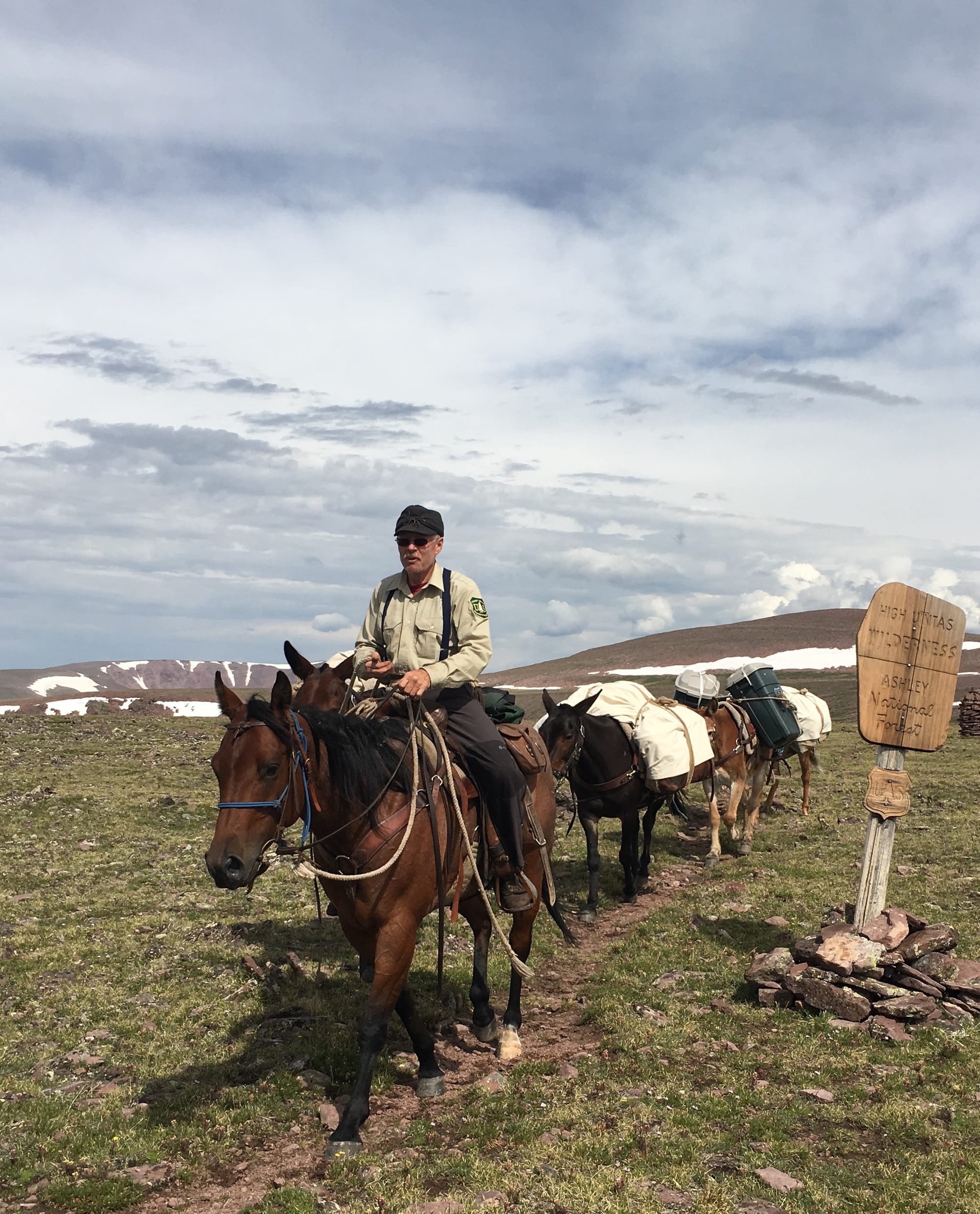
Ken Reed, a government packer in Utah’s Ashley National Forest, said that his region’s policy is to take old mules to auctions. The practice troubles him, because he has no control over who becomes the mules’ next owner. “Some of those old mules could end up in Mexico at a dog food factory,” he said.
Reed is planning to retire this summer. Given that his district’s entire trail crew has left after the firings, Reed’s 15 or so mules are headed to departure as well, since they’re technically out of business with no one to pack for.
Once stock programs vanish, practitioners say they’re virtually impossible to bring back. It takes years to train colts in the ways of packing, for humans, to master packing and horsemanship skills. Even after an animal and human pair up, understanding the language of equines also takes time. “The sky’s the limit with how much you can learn being on horseback,” said Edith Robinson, a forestry technician at Rocky Mountain who was fired on Valentine’s Day but has since been reinstated to unpaid status until the season starts in a month. After riding Easter the pine-loving horse for three years, Robinson can anticipate when he’s thinking about sneaking a bite of grass on the job. One tip she’s learned: Absolutely no glancing at her phone, because Easter, too, has learned to read his rider.
Maintenance costs of animals are part of each ranger district’s budget, and workers say they don’t come cheap. Feed, vet insurance and farrier services each come in the order of $1,000 per head annually.
Despite the diminished workforce and demand for packing, many employees are finding ways to cling to their stock. Lone supervisors in devastated districts are shouldering herd upkeep, and some fired workers have stepped up as volunteers. “These are living, breathing creatures. I’m their only voice,” said a fired-and-rehired packer working in the West who spoke to HCN anonymously. He was not going to retire his mules even when he himself was fired in February, and he’s already committed to mule care as a volunteer for the summer in case he’s terminated again.
“I’d like to believe that the animals will be safe no matter what, but I know they’re safe now,” he said.
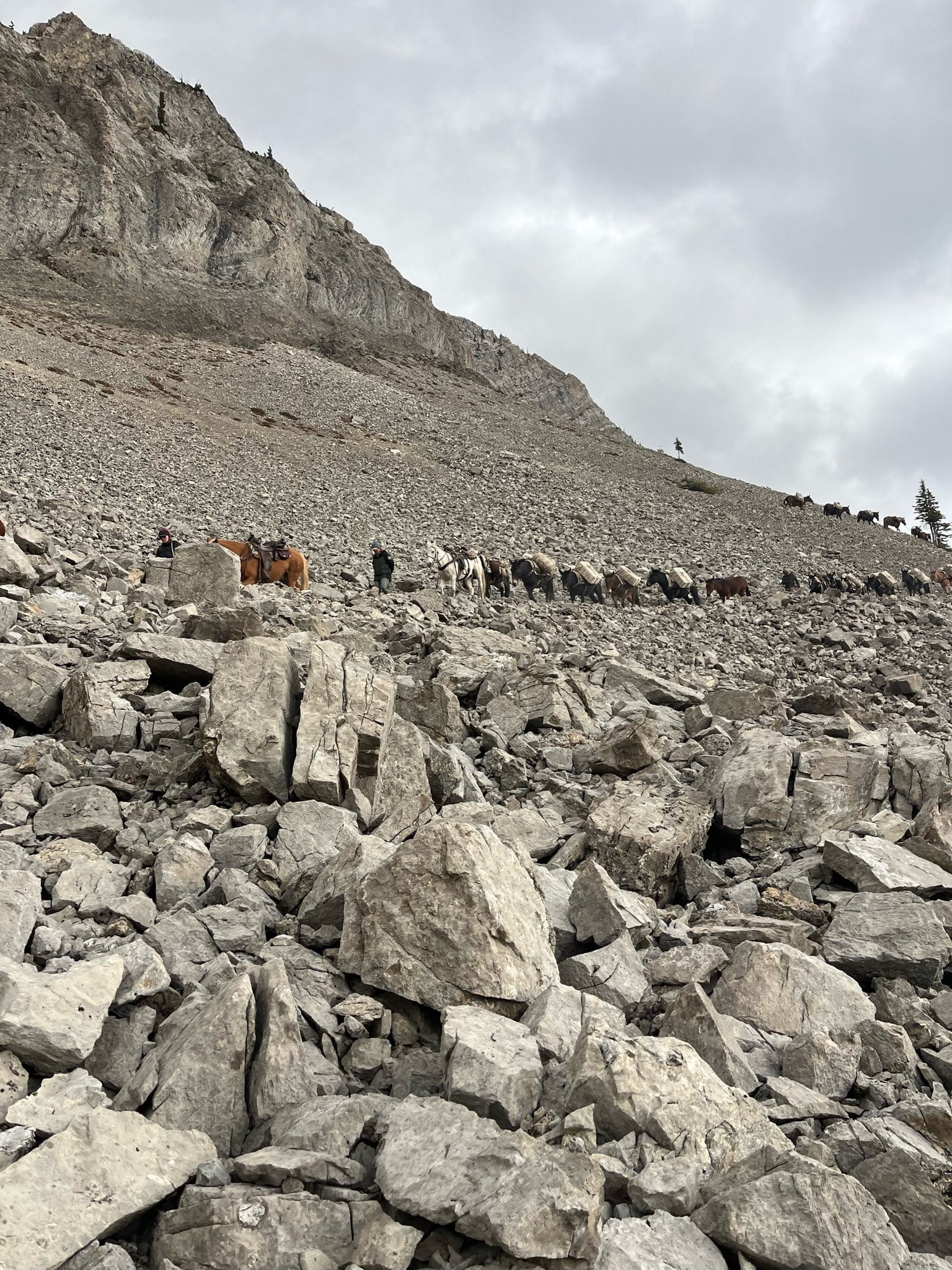
But such stopgap measures don’t work for larger districts like Spotted Bear. No one has the private resources to manage its herd of around 90, Gangemi said, so it won’t take long for higher-ups to notice if the animals are idle. Though some of his crew has been reinstated, he’s not holding his breath for the next mass layoff and is moving on to a new job. If his human team is dismantled again, he estimates that the animals will remain on the job for no more than a month before his district sheds them for good.
The hemorrhage of stock animals is part of a larger tragedy: the loss of ways as old as the human-equine relationship. Along with that comes a loss of memory, a gap in history and, ultimately, physical access to the landscape. Government packers aren’t the only legacy keepers, of course; private outfitters are also repositories of packing know-how. But there’s something special in the way the Forest Service has maintained the art, passing down the skills to the next generation. “Public service extends past your direct wave and smile to the public. It's also the appearance of your work and your professionalism,” Gangemi said. “My co-workers and I took that very seriously and maintained our animals, our equipment, to that high standard.” Not all for-profit packers may be so inclined.
This article first appeared on High Country News and is republished here under a Creative Commons Attribution-NonCommercial-NoDerivatives 4.0 International License.


